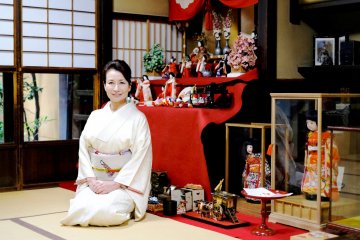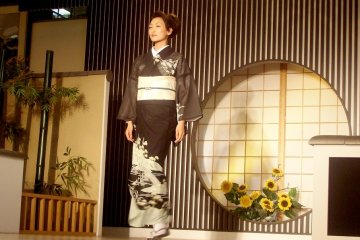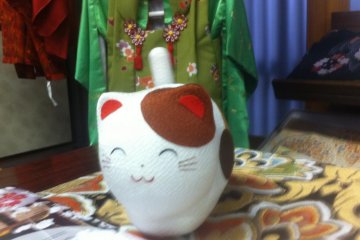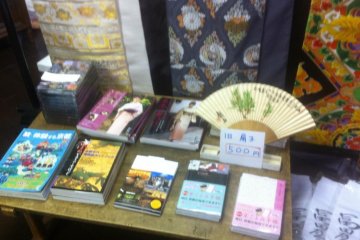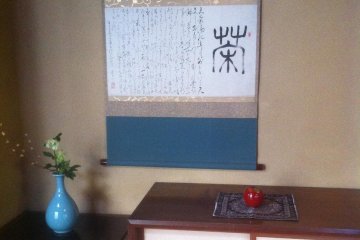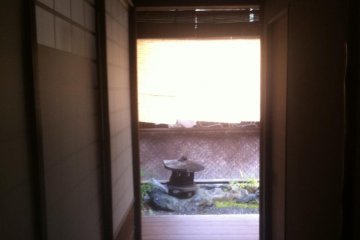“A bowl of tea thus held out,
a small sweet thus offered.
The guest is a god on a journey.
His seat lies between past and future”
Anonymous
In the days of old, pilgrims and merchants to and from the ancient capital of Kyoto looked forward to the welcome hospitality and serenity offered by a bowl of tea. This reminded me of another ancient verse, from the book of Hebrews. “Do not forget to entertain strangers, for by so doing some people have entertained angels without knowing it.”
On a quiet back street in the Nishijin textile district is Tondaya Machiya, a living museum to Japanese Hospitality. Chado, or the Way of Tea, is a time honored tradition practiced in Kyoto since the twelfth century. Today the thirteenth and current owner of Tondaya, Mrs. Mineko Tanaka welcomes me to my first tea ceremony in Japan.
The tea ceremony wasn’t always marked by calmness and serenity. In early medieval Japan, the nobility would host extravagant parties and guests would sample different kinds of tea and had to try and guess where they came from. This must have been one of the original drinking games. These days, I didn’t need to be coy to guess the source of this tea. Frothy cloudy green tea that was traditionally grounded on the day of the tea ceremony, my host kindly told me that this sample of the most expensive tea in the world came from Kyoto. Of course, I should’ve guessed. Full of vitamins and antioxidants, taking matcha tea is a great way to nourish your body and your mind.
For the uninitiated, Chado can be full of unwritten rules. Everything has an order, from the ritual cleansing of the utensils to the way the tea bowl (chawan) is turned before drinking. I wouldn’t get too stressed about all the procedures, and the English speaking teachers here are eternally forgiving and patient in answering even the most mundane questions. What is important here is calmness and mindfulness in meditating on the peace that comes from the tea ceremony.
In many ways, Chado embodies the essence of Japanese culture, from painting, ceramics, architecture, utensils, kimono dress and the appreciation of the four seasons, each of these elements is present in the tea ceremony.
I can’t think of a better way to experience Chado than in Tondaya. Stepping into this hundred year old Kyoto Machiya is like stepping into the life of a merchant from the Meiji period. The design of the tea room reflects traditional design, with 4 tatami mats placed around a square center mat which acts as a table. Even the way you step in the room has its own unique rhythm. The host enters with her right foot, and leave with her left foot, like a precise dance.
As the second guest, I watch and learn as the first guest takes sweet and tea under the attentive eye of the teacher. I sit in silent contemplation of the surroundings, and even the sound of the water being poured is likened to a stream, with its own music, like people who like to relax in the garden by the side of a bubbling brook.
The role of the first guest is to engender conversation, whether in the design of the utensils, the tea bowl or the floral arrangement. Everything is designed to create simplicity of mind and oneness with nature. The sound of the water, the tap of the utensils, the fragrance of the tea or the flowers, the visual beauty of the calligraphy hangings or the delicately decorated sweets, the texture in the earthy bowls or the give in the rice pastry sweets, they are all help you focus in the moment.
As there is a limit of three guests in the ceremony, it is like having tea with friends. For larger groups or those who can’t sit on the tatami mat, there is a larger tea room with western style seats.
While the tea ceremony may seem steep at ¥3,240, it is well worth it. Entry also includes a guided tour of the machiya townhouse. Joanna tells me that tradition dictates that Noh stages are minimally decorated, save a painting of a pine tree. The original owner takes this further by making a pine tree in the courtyard garden, the backdrop to the entertainment area. The area in front of the dining table can be used as a Noh stage, with a special tatami that makes a unique stamping sound when the Noh actors step on it. This and the many other features and stories of this machiya gave me a glimpse into the life of the wealthy silk merchant who would think nothing of hosting elaborate parties for up to forty people at this townhouse which formed both shop and home.



